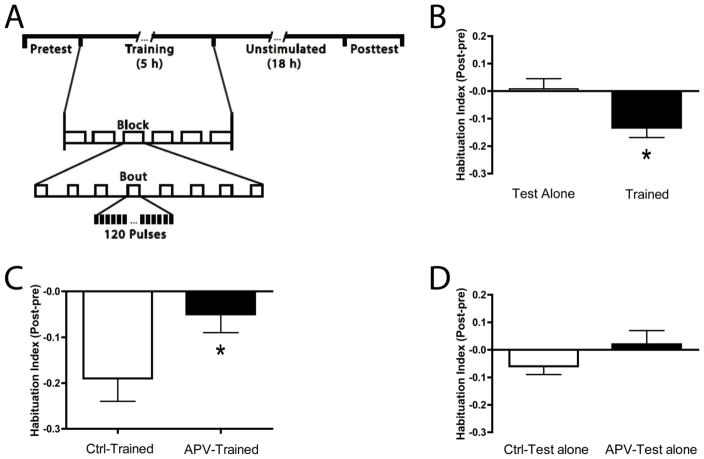Figure 1.
Habituation of the C-start in larval zebrafish expressed at 1 h posttraining requires NMDA receptor activity. (A) Experimental protocol used to demonstrate 1 h habituation. The Habituation Index = the mean posttest response rate minus mean pretest response rate. See the Materials and methods for additional information. All fish were 5 d post-fertilization (dpf) at the start of the experiments. After the Pretest period, during which the larvae were given 5 auditory pulses separated by 5 min, trained larvae received 6 blocks of habituation training, separated by 20 min. Each block comprised 8 bouts of auditory pulses (120 pulses per bout at 1 Hz, 3 min interbout interval). Following habituation training there was a 1 h period, during which the larvae were unstimulated, followed by the Posttest. The Posttest was identical to the Pretest. Untrained (Test Alone) larvae were treated identically to the Trained larvae, except that they received no stimulation prior to the rest period. See the Materials and methods for additional details. (B) ITH of the C-start. The Trained group exhibited significantly fewer escape responses than did the Test Alone group (asterisk). (C) Effect of NMDA receptor blockade on ITH. The APV-Trained group exhibited significantly less habituation than the Ctrl-Trained group (asterisk). (D) APV exposure did not affect the baseline responsiveness of zebrafish larvae. There was no significant difference between the two groups of untrained larvae (APV-Test Alone and Ctrl-Test Alone) with respect to the number of C-starts elicited.

